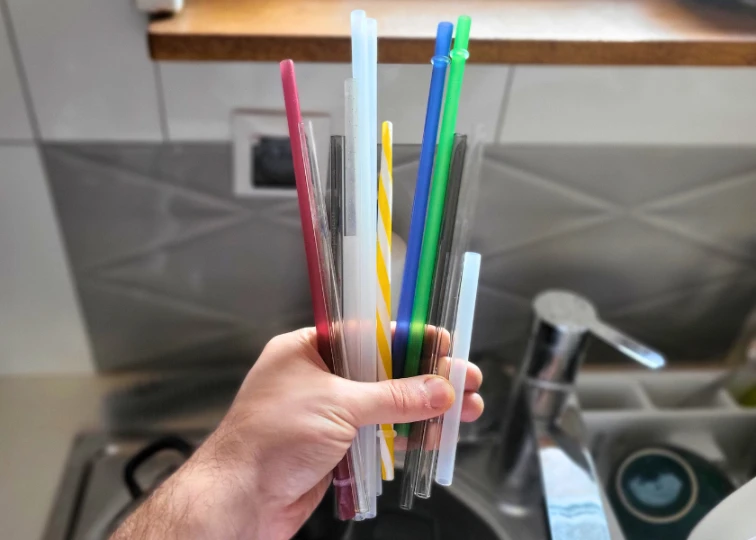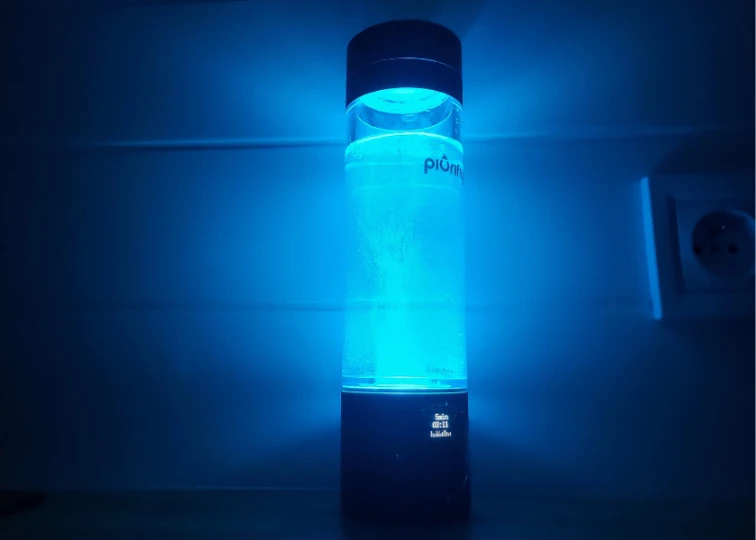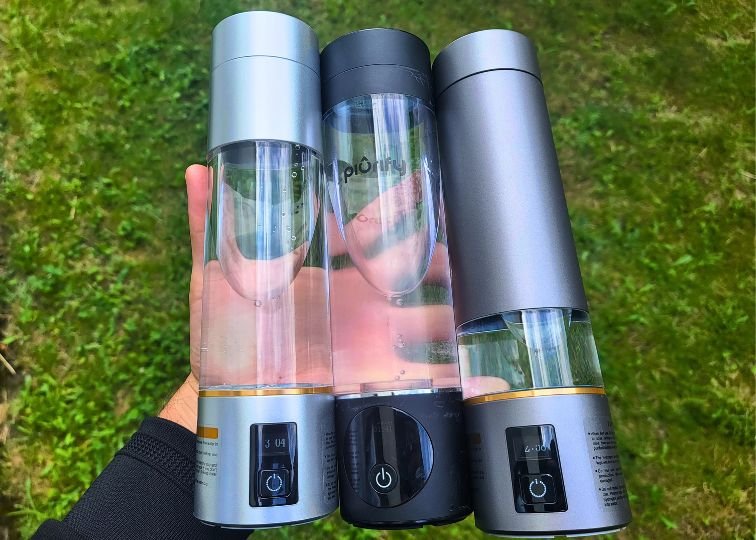Let’s clear something up right away: you need to clean your reusable straws every single day.
I get it, some people don’t even think to wash their water bottles daily, let alone the straws. But think about it: they go everywhere with you, and whatever’s left inside is just sitting there, waiting to ruin your day.
One study found that water bottles with straws can have 14 times more bacteria than a pet’s bowl. Let that sink in.
In this guide, I’ll walk you through the best ways to clean your straws, whether they’re plastic, metal, or silicone.
Some of the links on this page are affiliate links. This means that if you click on one of the links and make a purchase, I may earn a small commission at no additional cost to you.
What Is the Best Way to Clean a Straw?

If you’ve got a glass or stainless steel straw, the easiest way to clean it is to just toss it in the dishwasher. Most of them can handle it. Quick, effortless, and no scrubbing required.
But before you go all in, double-check what the manufacturer says, especially if you’re dealing with plastic. Some cheaper ones can warp under high heat, and no one wants a melted straw situation.
If you prefer washing by hand (or you’ve got a plastic straw that isn’t dishwasher-safe), a straw brush like this one is a lifesaver. I can’t imagine my cleaning routine without it, especially with all the bottles I have with built-in straws.
Now, let’s go through three steps to clean your straw by hand each day.
Step #1: Rinse After Each Use
Rinsing your straw after drinking water might be an overkill, but if you drank a juice, smoothie, electrolytes drink or any other drink with taste, it’s always a good habit to rinse it immediately with hot water.
That’s because If you let stuff sit inside too long (especially smoothies or coffee), it turns into a cleaning nightmare.
Step #2: Grab a Straw Brush
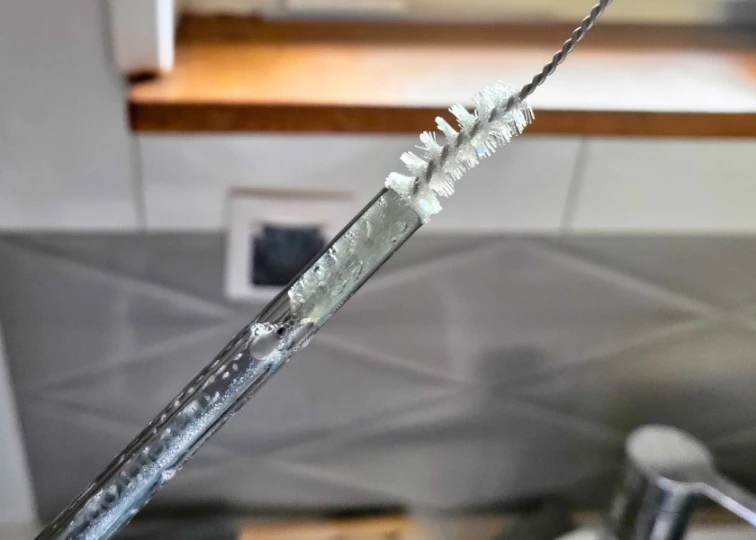
A tiny pipe-cleaner-like brush is your best friend. Just run it through the straw with warm, soapy water. Twist and scrub to get rid of any stubborn bits.
What if you don’t have a brush?
In this scenario, fill the straw with warm water, add a few drops of dish soap, cover both ends with your fingers, and shake it.
Step #3: Rinse Well
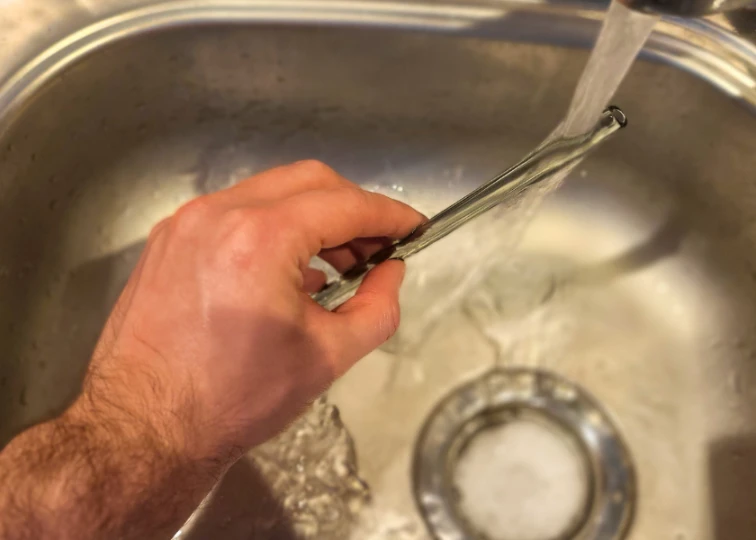
Run water through until all the soap is gone. No one wants to sip soapy water.
If you notice a soapy taste after cleaning, check out my guide on how to get the soapy taste out of water bottle.
Based on my experience, silicone straws and elements in the lids hold on soap more than other materials.
How to Deep Clean a Straw?
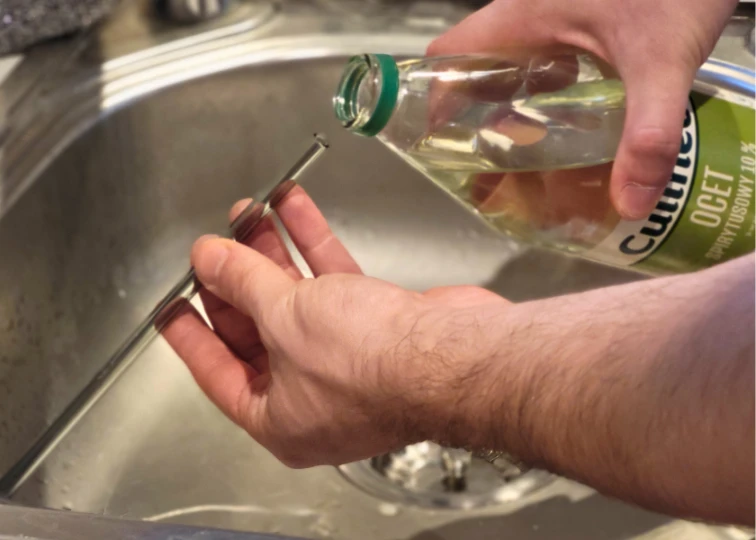
If you’re cleaning your straw daily using the method above, you should be good. But if it’s been a while or if you just know it’s seen better days, it’s time for a deep clean.
I like to do this about once a week or sooner if things start looking questionable.
I’ve got three solid methods that have never failed me when it comes to getting straws truly clean.
Method #1: Boiling Water Soak
Nothing fancy here, just drop the straw into a pot of boiling water for a few minutes to kill bacteria.
Method #2: Baking Soda + Vinegar
For super stubborn grime, pour a little baking soda inside the straw, then add vinegar. Let it fizz, then rinse like crazy.
Method #3: Dishwasher (If It’s Safe)
If your straw is dishwasher-safe, pop it in the silverware basket, but still check for leftover buildup afterward.
What Happens If You Don’t Clean Straws? Does It Get Moldy?
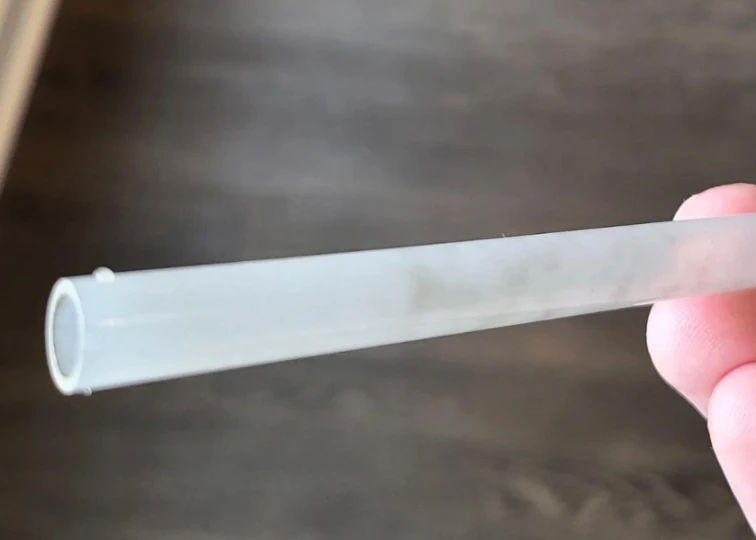
A straw can definitely get moldy when it’s wet, especially if you leave it damp for too long. Then, your straw basically turns into tiny tunnels of bacteria and mold.
It’s like leaving a soggy towel in the corner of your bathroom. At first, it’s just wet, but after a while, mold and mildew start to form if it’s not aired out. The same thing happens with straws.
When they’re wet and you store them in a dark, damp place (like inside a bag or in a drawer), it’s the perfect breeding ground for mold and bacteria to grow inside.
To avoid that, always make sure to dry your straw completely before storing it, and clean it daily.
Final Thoughts
Reusable straws are great, until you remember they’re basically tiny tubes where gunk loves to hide. But keeping them clean is easy if you’ve got the right approach.
Some people swear by Q-tips or even spraying them with 99% isopropyl alcohol, but nothing beats a good old straw brush. They’re cheap, ridiculously effective, and so useful that a lot of brands include them for free with their bottles.
Give your straw a quick scrub every day, and you’ll never have to wonder what’s lurking inside.

Jeremiah Kowalski
Hey there! I’m Jeremiah, the guy behind WaterBottleAdvisor.com. I used to have a bad habit of guzzling sodas while working remotely, but thanks to reusable water bottles, I’ve turned my hydration game around. After testing over 50 bottles, I’m here to help you find the perfect one to make staying hydrated a joy, not a chore. When I’m not reviewing bottles, you’ll likely find me scaling steep trails around the world, trusty water bottle in hand.

